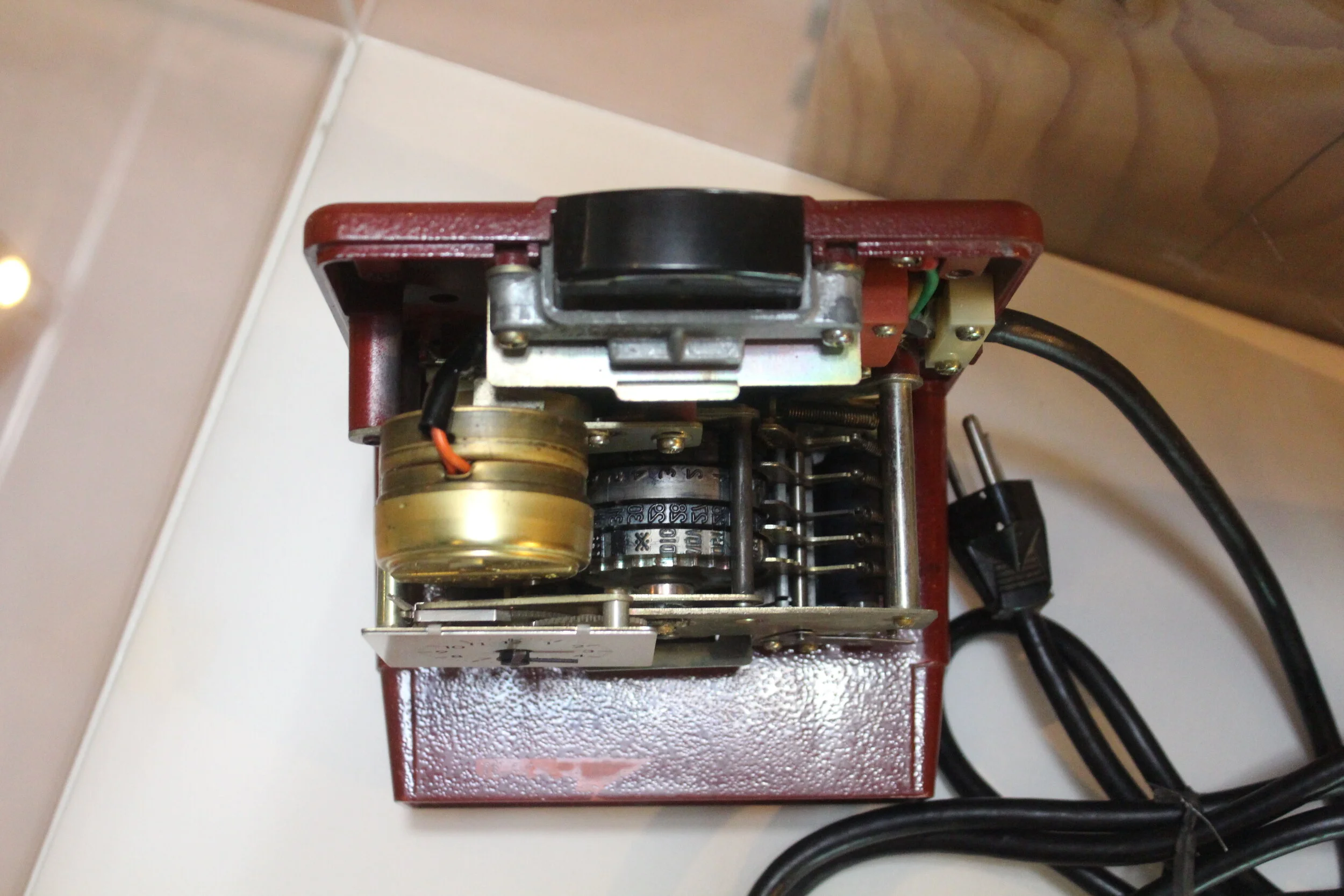September’s Artifact of the Month is an Amano Time Clock, which is not only a beautiful piece of machinery, but also a part of Redding’s history. Built by Amano Time Systems, a Japanese manufacturer in the 1970s, it was used in Redding’s premier upscale department store at the time, Dicker’s.
Artifact of the Month: Haida Argillite Sculpture
Artifact of the Month: Ice Chipper
Artifact of the Month: Historic Remedies
Artifact of the Month: Victorian Pickle Castor
How providential that we are able to present this perfectly pleasing yet peculiar pickle paraphernalia! This is not your ordinary pickle jar! In fact, it probably didn’t hold the type of pickles we are most familiar with today – those delicious, tangy, former cucumbers. Before the ubiquity of refrigeration, jams, jellies, pickles, and chutneys preserved produce for future consumption. Victorian pickle recipes included sweet pickled cantaloupe, pickled onions, cauliflower, cabbage, radish pods, nasturtium seeds, walnuts, as well as the more familiar gherkins and cucumbers. Spiced or pickled fruits such as sour plums, blackberries, cherries, and pears were also popular. Yum!
Artifact of the Month: Powder Horn
You may think this is a horn to blow – a type of trumpet to gather the troops and charge into battle! Though these objects were sometimes used in battle, by local militiamen during the Revolutionary War for example, powder horns served a different purpose. In addition to bullets and the firearms themselves, powder horns carried another important part of the kit – gunpowder!
Artifact of the Month: Bentwood Box
Artifact of the Month: Opera Glasses
Long before we cozied up for a movie with a bowl of popcorn and a loved one, shuffled through our iPod playlist, cheered to a baseball game on the radio, or sheltered-in-place, folks sought live entertainment in the company of friends and strangers. It was both intimate and communal. Performances such as plays, operas, ballets – even music, magic, and comedy – took place on a big, well-lit stage. Patrons sat in a darkened auditorium. Some were close enough to see the sweat of an actor’s brow, yet some sat too far to make out important details that helped tell the story. Sporting events like horse racing also presented a need to see the action from a distance. Luckily, a series of technological advances led to an elegant solution – opera glasses.
Artifact of the Month - World War I Gas Mask
World War I, also known as the Great War, lasted from July 1914 to November 1918. It was the first time poisonous gas was used in battle. U.S. troops did not have a standard gas mask for combat, so they eventually adopted the British version. The use of chlorine gas by the Germans received widespread condemnation and the Geneva Protocol of 1925 banned the use of chemical weapons.
Artifact of the Month: 50 Sen Banknote
Sometimes, the internet is a curator’s friend. For 42 years, this Artifact of the Month has been misidentified in our records. The donor thought that her late husband had passed on to her a 50-yen banknote that he’d acquired when he was stationed in Japan during World War II. She noted in her correspondence, that it had been worth “about 20 American dollars when he got it.” When the Redding Museum of Art and History received the donation in 1978, they did not have immediate access to the resources required to verify or refute this identification, so it went into the records as “yen.”
Artifact of the Month: Teapot & Creamer Set
Artifact of the Month: 1940s Lucite Handbag
One might argue that the handbag (purse, satchel, or just plain old bag) is probably one of the oldest hominid inventions. An animal bladder, a skin, a gourd, or even a really big leaf could be adapted as an effective way to carry our ever-increasing number of possessions. Over millennia, a relatively simple and practical way to carry stuff has been elevated to an art form and a status symbol accessory.
Artifact of the Month: Mystery Object Revealed!
New Exhibition: Forests of Fortune
Artifact of the Month: Rotary Dial Telephone
Artifact of the Month: Match Safes
These mystery objects were on fire during February, overwhelmingly winning this month’s slot for Artifact of the Month! Some folks may have guessed that these little, metal boxes were lighters, which is not too far off since they are indeed associated with making fire. However, these diverse artifacts are all various types of match safes.
Artifact of the Month: Turkana Head Rest
This “mystery object” received an overwhelming number of votes in our visitor poll! A mystery no more, this head rest was accessioned into the Turtle Bay museum collection in 1978 with the description, “head rest from the Turkana culture of Northwestern Kenya; used to protect hairdos while sleeping and to keep bugs from getting into hair; carried with a sash worn around the waist and is sometimes used as a stool.” So, now you know!























